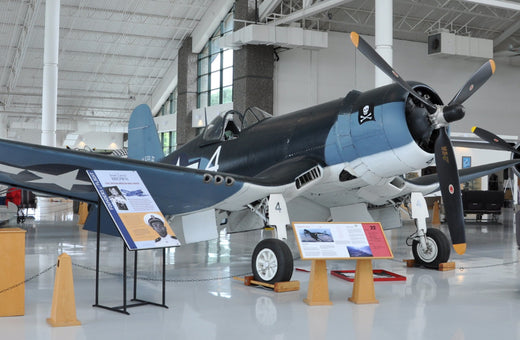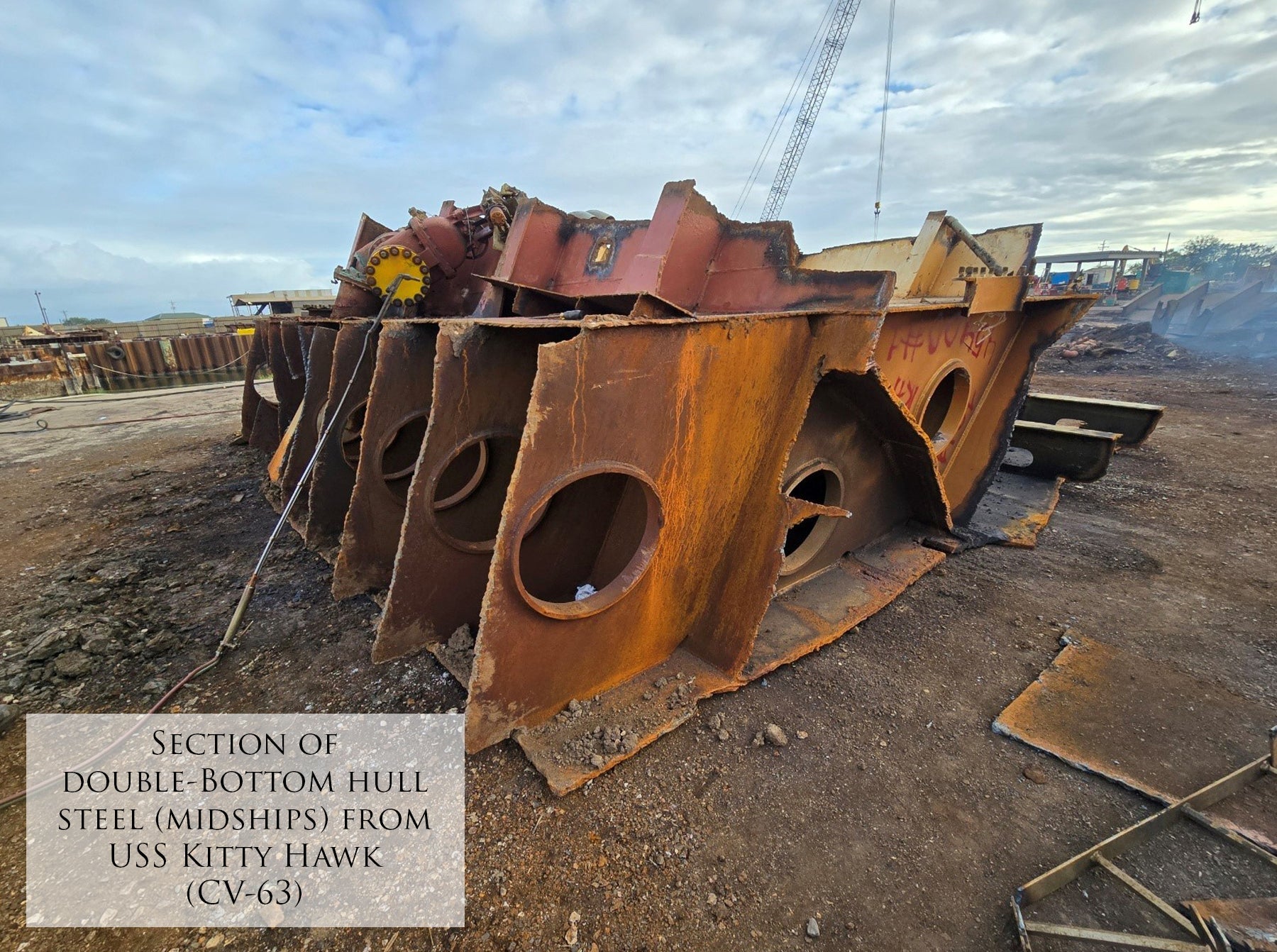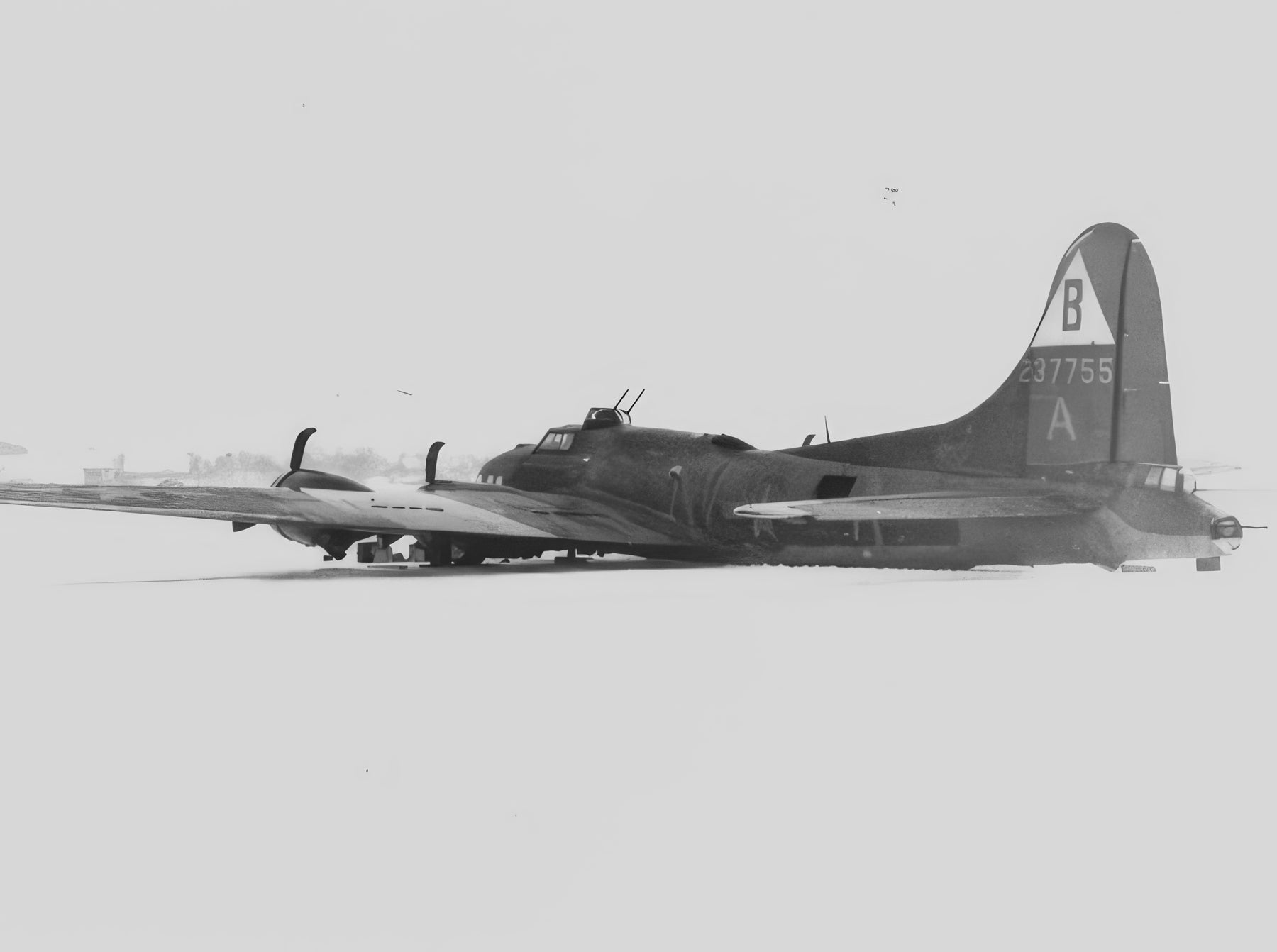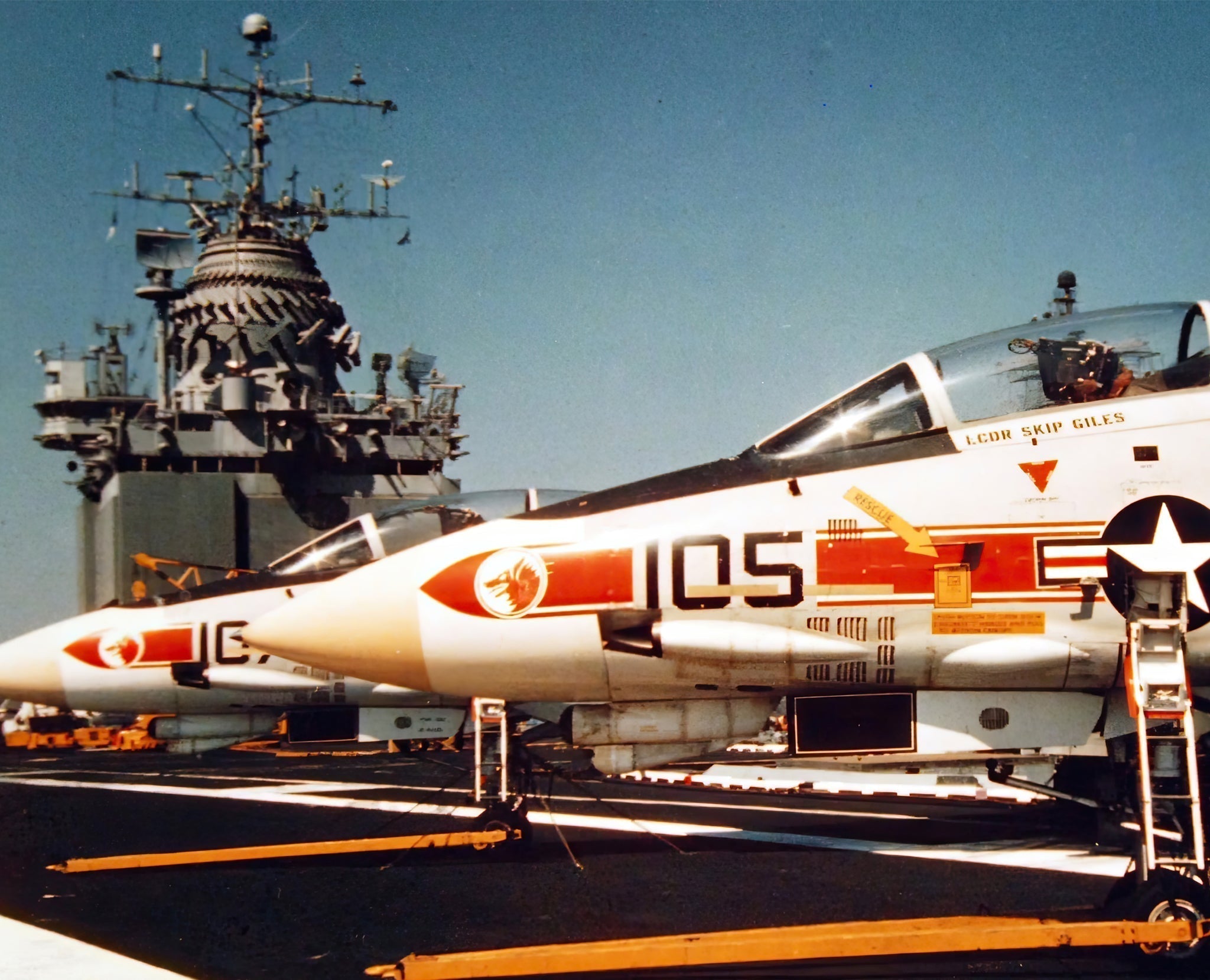This Fine Art Print by Artist Craig Tinder depicts Goodyear FG-1D Corsair No. 92095 in anticipation of "Operation Downfall" - the proposed Allied invasion of Japan that never materialized. This Limited Edition Canvas Print includes an actual fragment from a Corsair No. 92095 from her 2022 restoration back to airworthiness.
Details About the RELIC:
This aluminum wing spar fragment, once a vital part of the starboard wing of Goodyear-built FG-1D Corsair No. 92095, was removed during restoration in 2022. The wing spar—located at the famous "gull" wing curve—was provided to Aces In Action to complete a commissioned art piece that honors the aircraft’s distinguished historical journey.
 Artist, Craig Tinder, holding the fragment of a Corsair's aluminum wing skin that is included in "The Scrappers" limited edition prints
Artist, Craig Tinder, holding the fragment of a Corsair's aluminum wing skin that is included in "The Scrappers" limited edition prints
 Relic included with each Scrapper's Corsair canvas art print
Relic included with each Scrapper's Corsair canvas art print
The Story of Corsair No. 92095
First taken into service by the United States Navy in April 1945, Corsair No. 92095 was assigned to Bombing Fighting Squadron 80 (VBF-80) aboard the USS Boxer (CV-21) during the closing months of World War II. The Corsair was known for its distinctive inverted gull-wing design, which allowed the aircraft to carry the large propeller and powerful engine it needed for high performance. It played a crucial role in air-to-air combat and ground attack missions during the Pacific campaign. Although Corsair No. 92095 joined the fray late in the war, the F4U Corsair itself became an icon of naval aviation and was revered by pilots for its speed, agility, and ruggedness in battle.
The Story Behind the Print:
This artwork captures FG-1D Corsair, No. 92095, soaring high above the USS Boxer, an Essex-class aircraft carrier, during training exercises in preparation for "Operation Downfall"—the planned Allied invasion of Japan that never took place due to Japan’s surrender. As part of the United States Navy's fleet, this specific Corsair model was integral to the training of pilots in the final stages of World War II, as Allied forces anticipated the possibility of large-scale amphibious assaults on Japan.
Dubbed "Whistling Death" by its enemies due to the high-pitched sound it produced during dives, the FG-1D Corsair was the Fighter-Bomber variant of the renowned F4U Corsair. Designed for carrier-based operations, the FG-1D's role extended far beyond World War II. Its robust construction and impressive speed made it the Navy and Marine Corps' primary close air support aircraft during the Korean War, where it proved to be just as effective in ground attack missions. As depicted in the artwork, the Corsair’s distinctive "gull wing" design is on full display, a feature that contributed to its iconic silhouette and its ability to excel in both air-to-air and air-to-ground combat scenarios.
 FG-1D Corsair 92095 on static display prior to flight restoration
FG-1D Corsair 92095 on static display prior to flight restoration
The artwork commemorates the training and readiness of Allied forces during a tense period of uncertainty, where Operation Downfall loomed on the horizon, although it ultimately never came to fruition.
To purchase or see similar items, visit here.
Commissioned by Museums, Treasured by Collectors





Share:
WARBIRDS OVER MONROE - Nov 6 & 7 2021
Say goodbye to the 2021 Airshow Season!